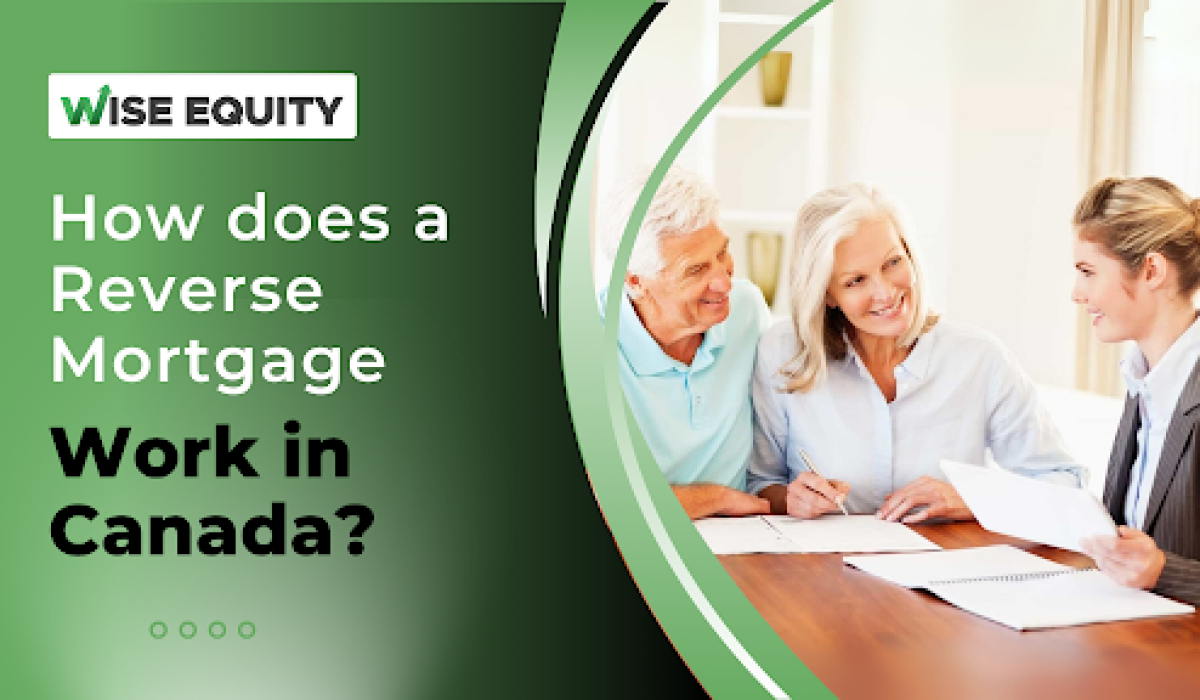As Canadian homeowners reach retirement, many want financial freedom without selling their home. That’s where a reverse mortgage comes in. But how does a reverse mortgage work, and is it the right choice for you?
Let’s break it down simply — from what it is, how you qualify, and what you can expect when you apply.
What Is a Reverse Mortgage?
A reverse mortgage allows Canadian homeowners aged 55 or older to borrow money using the equity in their home. Unlike a traditional mortgage, you don’t make monthly payments. Instead, the loan is repaid when you move out, sell your home, or pass away.
It’s called “reverse” because the lender pays you — in tax-free cash — rather than you paying them. Homeowners can receive funds as a lump sum, a monthly payment, or through a flexible drawdown option, depending on financial goals.
Eligibility Requirements
To understand how a reverse mortgage works, you must first know who qualifies. In Canada, you generally must:
- Be 55 years or older.
- Own your primary residence.
- Have significant home equity (often 50% or more).
- Live in an eligible property type (detached home, townhouse, condo, etc.).
Lenders will also consider the home’s location, condition, and appraised value before approval.

How the Loan Amount is Determined
The amount you can borrow depends on:
- Your age (older borrowers can access more).
- The home’s appraised value.
- Current interest rates.
- The property’s location.
For instance, a 75-year-old homeowner in Toronto with a $900,000 home could qualify for a higher loan percentage than a 60-year-old with a smaller property.
How a Reverse Mortgage Works — Step-by-Step
Let’s simplify the process into five easy steps:
- Consultation: You contact a financial advisor or a partner like Wise Equity to review your eligibility.
- Application: You provide documentation about your home and finances.
- Appraisal: A certified appraiser evaluates your home to determine its value.
- Approval: The lender decides how much equity you can borrow.
- Funding: You receive tax-free funds — either all at once or over time.
Throughout this process, homeowners must also seek independent legal advice, as required by Canadian lenders, to ensure a full understanding of the loan terms.
Interest and Repayment Explained
Now, how does a reverse mortgage actually function financially? Interest accumulates on the loan over time, but you don’t need to make any monthly payments. The balance (principal + interest) is repaid only when the home is sold or ownership changes.
You continue to own your home, maintain it, and pay property taxes and insurance.
For example, if you borrow $200,000 at a 6% interest rate, your balance will increase each year. However, since home values typically rise, your equity can remain strong over time.

Tax Implications and Benefits
A major advantage is that the money you receive is tax-free, since it’s a loan, not income. You can use it for:
- Supplementing retirement income.
- Paying off existing debts.
- Renovating your home.
- Covering healthcare expenses.
Because the funds are flexible, homeowners can manage retirement costs more comfortably without leaving their homes.
Is It Right for You?
Knowing how a reverse mortgage works helps you decide whether it fits your lifestyle. It’s ideal for:
- Retirees with most of their wealth in home equity.
- Those wanting to stay in their homes long-term.
- Homeowners needing cash flow without selling.
However, if you plan to move soon or want to leave a large inheritance, it might not be the best fit.
How Wise Equity Helps
Wise Equity guides Canadian homeowners through every stage of the reverse mortgage process. Their experts:
- Evaluate your eligibility.
- Compare lender offers.
- Use reverse mortgage calculators to estimate payouts.
- Explain the long-term impact on your finances.
With their experience, you can confidently decide whether this is the right financial tool for you.
Conclusion
So, how does a reverse mortgage work? Simply put, it enables Canadians to convert their home equity into tax-free cash while remaining in their homes. By meeting basic eligibility, keeping up with maintenance, and partnering with experts like Wise Equity, homeowners can access the value of their property safely and strategically.

